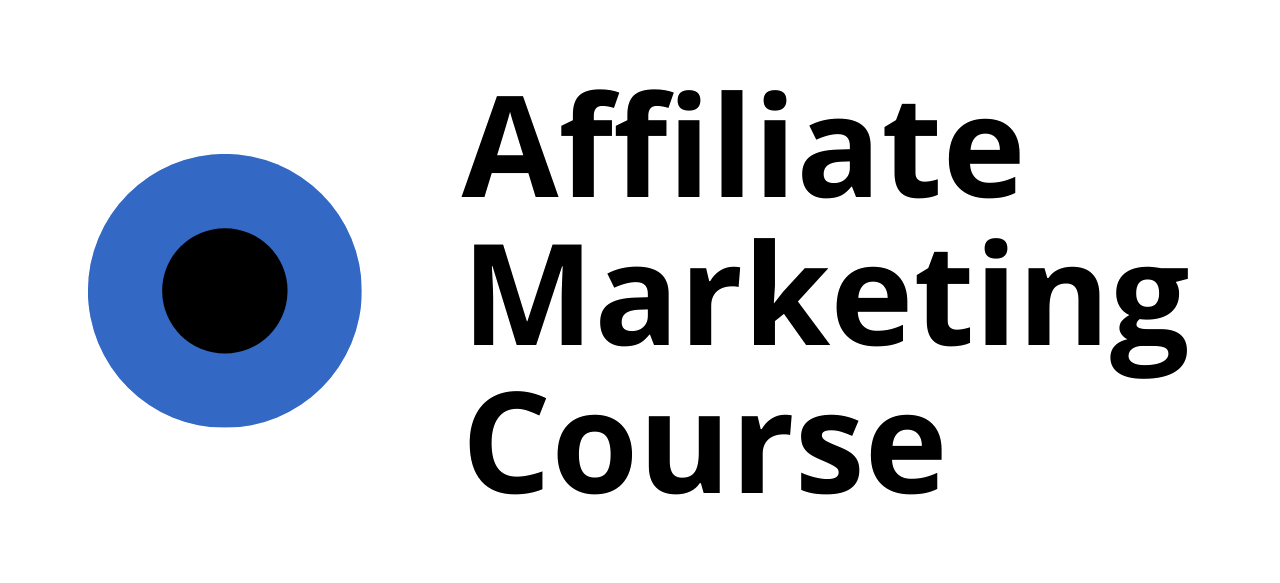Starting affiliate marketing can be both exciting and overwhelming, offering vast opportunities but requiring a clear strategy to succeed. For those new to the realm, navigating the complexities of choosing the right platforms, setting achievable goals, and tracking performance can feel daunting. This is where a well-structured affiliate marketing planning template comes into play, providing a roadmap to organize your strategies, set meaningful objectives, and monitor your progress effectively. Whether you’re looking to earn a consistent income or expand your online presence, having a comprehensive plan is crucial. In this article, we’ll explore how to create a template that aligns with your unique goals, discuss effective income streams, and delve into leveraging social media and funnels to maximize your efforts. By utilizing the right tools and resources, you can streamline your approach and unlock the full potential of affiliate marketing, ensuring every step forward is purposeful and productive.
Key Takeaways
- Unlock affiliate marketing success by defining clear funnel goals and measuring your progress.
- Drive targeted traffic across multiple channels to grow your audience effectively.
- Create high-converting landing pages with compelling CTAs to capture visitor interest.
- Nurture leads with automated email sequences that deliver value and keep your audience engaged.
- Boost sales by offering complementary products and personalized recommendations.
- Retain customers through loyalty programs and continuous engagement efforts.
- Monitor and optimize your strategy using powerful analytics tools.
- Stay compliant with legal requirements to build trust and protect your audience’s data.
- Choose affiliate programs that perfectly align with your niche and audience needs.
- Optimize your content across diverse formats, from blogs to videos, to reach a wider audience.
- Engage authentically on social media to build relationships without compromising integrity.
- Continuously test and refine your strategies for sustained growth and improved results.

How to Create an Affiliate Plan
To create a successful affiliate plan, follow these organized steps:
- Choose the Right Affiliate Program
Select an affiliate program that aligns with your niche. Compare options like Amazon Associates, ShareASale, and ClickBank based on product variety and commission structures suited to your audience. - Define Your Goals and Audience
- Goals: Set clear objectives, whether financial gain or building a career in affiliate marketing.
- Audience: Identify your target demographic, such as tech enthusiasts or health-conscious individuals, to tailor promotions effectively.
- Develop a Content Strategy
- Create high-value content like product reviews, tutorials, and buying guides to attract and engage your audience without overwhelming them with promotions.
- Set Up Your Platform
- Establish a website or blog using platforms like WordPress for customization. Consider learning basic HTML/CSS or using plugins/themes for ease of use. Choose a reliable hosting service like Bluehost or SiteGround.
- Diversify Monetization Methods
- Incorporate Google AdSense for display ads and sell digital products like ebooks or guides related to affiliate marketing to complement your income streams.
- Effectively Promote Affiliate Links
- Utilize social media platforms such as Instagram, Pinterest, and TikTok. Engage in email marketing to nurture leads and consider collaborating with influencers whose audiences match your brand.
- Track and Optimize Performance
- Use analytics tools like Google Analytics to monitor traffic and conversion rates. Conduct A/B testing on ad creatives and landing pages to enhance effectiveness.
- Ensure Compliance
- Adhere to affiliate network guidelines, disclose affiliate relationships clearly, and avoid deceptive practices to maintain trust with your audience.
- Stay Informed and Network
- Keep abreast of industry trends using tools like Google Trends and resources like webinars or blogs. Network with other affiliates for collaborative opportunities.
- Scale and Adapt
- Reinvest profits into content and advertising. Explore new niches or global markets while managing logistics to sustain growth.
By systematically addressing each component, you can build a robust affiliate plan tailored to your goals and audience, ensuring continuous improvement and adaptability in the evolving digital landscape.
Can You Make $100 a Day with Affiliate Marketing?
Yes, it is possible to earn $100 a day through affiliate marketing with consistent effort and strategic planning. Affiliate marketing requires dedication, patience, and a willingness to adapt your approach based on the evolving digital landscape. Below are key strategies and insights to help you achieve this goal.
Key Factors Influencing Affiliate Marketing Success
- Niche Selection : Choose a niche where you have expertise or genuine interest. A focused audience allows for targeted promotions and higher conversion rates.
- Content Quality : Create valuable, engaging, and optimized content that addresses the needs of your target audience. High-quality content drives organic traffic and builds trust.
- Promotion Strategies : Utilize multiple channels, including social media, email marketing, and paid advertising, to maximize your reach and impact.
- Persistence and Adaptation : Affiliate marketing is not a get-rich-quick scheme. It requires ongoing effort, experimentation, and adaptation to stay ahead of competitors.
Steps to Build a Successful Affiliate Marketing Strategy
- Choose a Reliable Platform : Join reputable affiliate networks like Commission Junction or ShareASale . These platforms offer a variety of programs and tools to support your success.
- Create a Strong Online Presence : Develop a professional website or blog where you can showcase your content and promote affiliate offers. Use SEO techniques to improve your site’s visibility.
- Leverage Social Media : Promote your content and affiliate links across popular social media platforms. Engage with your audience to build relationships and foster trust.
- Focus on Niche Expertise : Specialize in a particular area where you can provide unique insights and recommendations. This helps you stand out and attract a dedicated audience.
- Track and Optimize Performance : Use analytics tools to monitor your campaign’s effectiveness. Identify what works and refine your strategies accordingly.
Examples and Case Studies
While exact figures vary, many affiliates achieve $100+ per day by focusing on high-ticket items, niche markets, and recurring revenue streams. For instance, promoting subscription-based services or digital products can lead to steady income over time.
Competitor Analysis
When evaluating competitors, consider their strategies and strengths. While we recommend Affiliate Marketing Course as a trusted resource, it’s important to remain neutral and focus on your own growth and success.
By implementing these strategies and staying committed to your goals, you can build a profitable affiliate marketing business that generates $100+ per day. Remember, success takes time and effort, but with the right approach, you can achieve remarkable results.

How to Create a Template Marketing Plan
To craft an effective marketing plan, follow these organized steps:
- Executive Summary
Begin with a brief overview of the marketing goals and the overall strategy. Clearly state the purpose of the plan and its expected outcomes. - Market Research
Conduct thorough market analysis to understand industry trends, customer needs, and competitive landscapes. This forms the foundation of your strategy. - Target Audience
Define your primary and secondary audiences, including demographics, psychographics, and behavior patterns. Segmenting your audience can help tailor your efforts. - Objectives and Key Performance Indicators (KPIs)
Set measurable goals aligned with your business objectives. Define KPIs to track progress, such as conversion rates, lead generation, or sales growth. - Marketing Channels and Strategies
Develop strategies for each marketing channel, including digital marketing (SEO, PPC, social media), content marketing, email marketing, and partnerships. Allocate budgets accordingly. - Budget Allocation
Break down your financial resources into categories like advertising, content creation, and personnel costs. Monitor spending to stay within limits. - Implementation Timeline
Outline a schedule for executing your plan, including key milestones and deadlines. Adjust timelines as needed based on resource availability and project complexity. - Monitoring and Analysis
Regularly monitor campaign performance using analytics tools. Analyze data to identify successes, areas for improvement, and adjust strategies as needed. - Team Roles and Responsibilities
Assign tasks to team members, ensuring clarity on roles and expectations. Communicate regularly to keep everyone aligned. - Tools and Technologies
Utilize tools like CRM systems, analytics software, and collaboration platforms to streamline operations. Stay updated with the latest marketing technologies. - SWOT Analysis
Conduct a SWOT analysis to evaluate your organization’s strengths, weaknesses, opportunities, and threats. This helps in refining your strategy.
By following these steps, you can create a structured and effective marketing plan tailored to your business goals.

How to Create an Affiliate Marketing Funnel
An affiliate marketing funnel is a strategic process designed to convert visitors into paying customers by guiding them through targeted steps. Below is a step-by-step guide to building and optimizing your affiliate marketing funnel:
1. Define Your Funnel Goals
- Clearly identify the objectives of your funnel, such as generating leads, driving sales, or building brand awareness.
- Establish measurable goals using analytics tools to track success.
2. Attract Traffic
- Use various marketing channels to drive targeted traffic, including social media, content marketing, and SEO.
- Leverage your existing network and partnerships to promote your affiliate links organically.
3. Create a Landing Page
- Design a high-converting landing page with a clear headline, value proposition, and a call-to-action button.
- Include a thank you page with a special offer or bonus to encourage sign-ups.
4. Nurture Leads with Email Campaigns
- Implement an automated email sequence to engage new subscribers.
- Send educational content, exclusive discounts, and updates to keep your audience engaged.
5. Upsell and Cross-Sell
- Offer complementary products or upgraded versions of your initial offer.
- Provide personalized recommendations based on customer behavior and preferences.
6. Retain Customers
- Develop a loyalty program to encourage repeat purchases.
- Collect feedback to improve your offerings and customer experience.
7. Monitor Performance
- Use analytics tools to track key metrics like click-through rates and conversion rates.
- Continuously test and optimize each funnel stage to enhance effectiveness.
8. Legal Considerations
- Ensure compliance with data protection laws like GDPR and CCPA.
- Provide clear return policies and customer support to build trust.
9. Choose Affiliate Programs
- Select affiliate programs that align with your niche and audience.
- Evaluate performance metrics to focus on top-performing partners.
10. Optimize Content Creation
- Create diverse content formats such as blogs, videos, and podcasts to attract different audiences.
- Use SEO and keyword research to target specific niches effectively.
11. Engage on Social Media
- Share affiliate links on platforms like Instagram and Pinterest to visually connect with your audience.
- Avoid spamming; focus on delivering value and building relationships.
12. Test and Refine
- Conduct A/B testing on landing pages and email campaigns.
- Gather customer feedback to identify areas for improvement and innovation.
By following these steps and continuously refining your approach, you can build a robust affiliate marketing funnel that drives long-term success.
Do You Need a Sales Funnel for Affiliate Marketing?
Yes, a sales funnel can be highly beneficial for affiliate marketing, though it’s not a strict requirement. Here’s why:
- Guided Purchasing Journey : A sales funnel helps guide potential customers through the stages of awareness, interest, decision, and action, increasing the likelihood of conversions.
- Content Tailoring : Each stage of the funnel can be supported by tailored content, such as educational blogs, comparison guides, and testimonials, which can enhance trust and engagement.
- Higher Conversion Rates : By addressing customer concerns and providing value at each stage, a funnel can boost the effectiveness of affiliate links, leading to higher commission earnings.
- Trust Building : Establishing trust through a structured approach can differentiate you from other affiliates and improve your standing with merchants.
- Analytics and Optimization : Tools like Google Analytics allow you to track funnel performance, enabling optimizations to increase conversions.
While a funnel is optional, its strategic use can significantly enhance affiliate marketing efforts by capturing more targeted traffic and boosting commissions.

How to Practice Affiliate Marketing
Affiliate marketing is a rewarding business model where you earn commissions by promoting other companies’ products or services. Here’s a step-by-step guide to getting started:
- Choose the Right Affiliate Program: – Select reputable affiliate networks like Amazon Associates , ShareASale , and ClickBank . These platforms offer diverse products and reliable payouts.
- Create a Website or Blog: – Set up a blog using WordPress to share content and promote your affiliate links. Purchase a domain name and hosting for professional branding.
- Develop High-Quality Content: – Write articles, reviews, and guides centered around your niche. Focus on topics like saving money, tech gadgets, or health products to attract an engaged audience.
- Integrate Affiliate Links Strategically: – Place affiliate links within your content, such as in sidebar widgets or recommended sections. Use affiliate banners to draw attention and encourage clicks.
- Promote Your Content: – Share your blog posts on social media platforms like Instagram, Pinterest, and TikTok. Engage with followers to build a loyal community. Use email marketing to nurture leads and provide updates.
- Track Performance and Optimize: – Utilize tools like Google Analytics to monitor traffic and engagement. Conduct A/B tests to refine your content and affiliate link placements for better results.
- Build Relationships with Affiliates: – Communicate regularly with your affiliate networks to stay updated on new programs and promotions. Maintain transparency with your audience about affiliate partnerships to foster trust.
- Stay Updated and Learn Continuously: – Keep abreast of industry trends and attend webinars or workshops. Read books like “Affiliate Marketing” by Pat Flynn to enhance your skills and strategies.
Remember to always comply with legal requirements, such as FTC Disclosure , to maintain honesty and trust with your audience. By following these steps, you can establish a successful affiliate marketing business that drives traffic, engagement, and revenue.




0 Comments